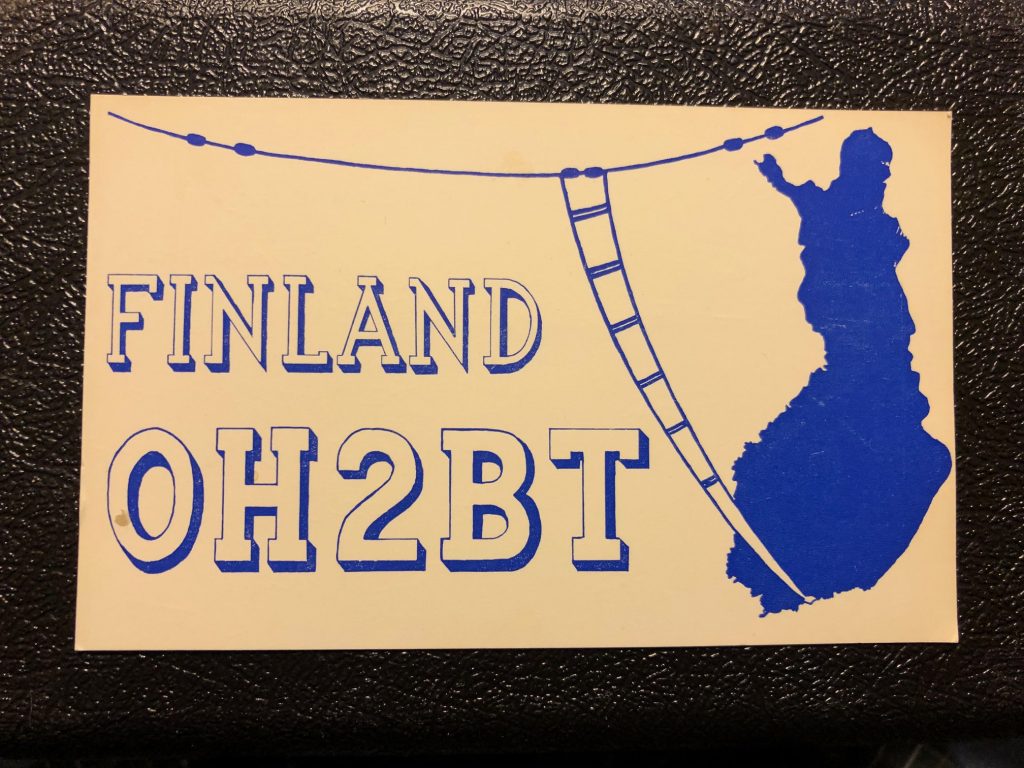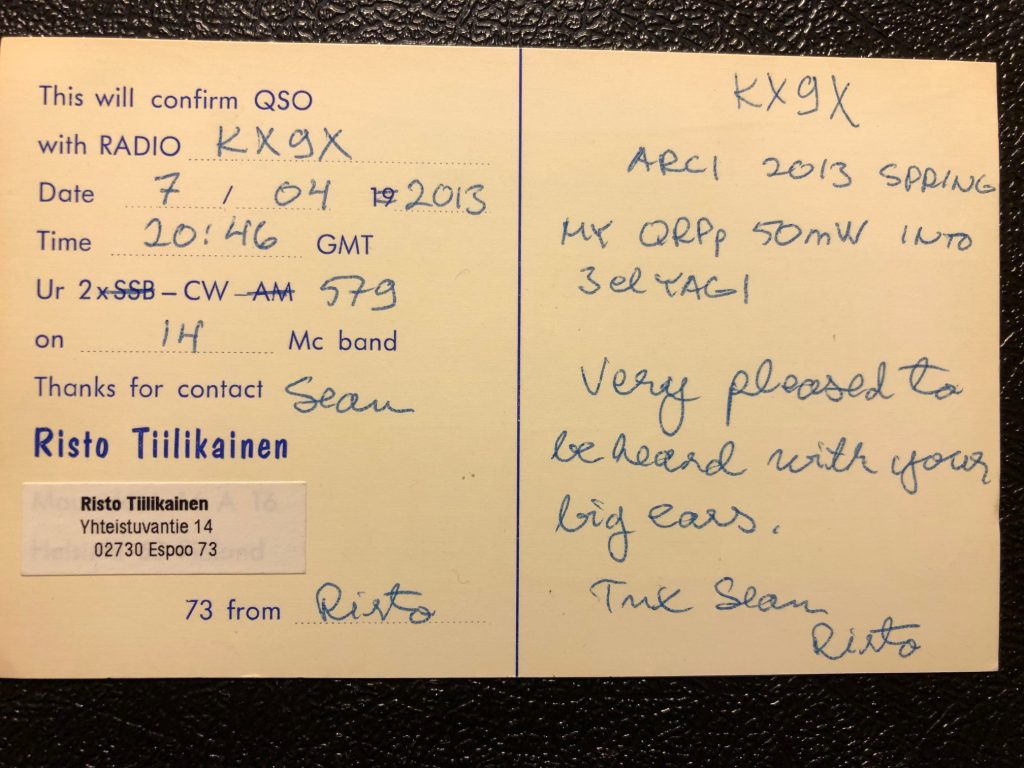After 38 years of being an active amateur radio operator, I’ve had over 100,000 QSOs on all bands from 160 meters to 10 GHz. Making contact with other operators around the world creates a special bond, and we all have access to that club. Even after decades of Ham radio enjoyment, I remain fascinated by the ability we have to throw a piece of wire into a tree, emit a voice, CW or digital mode signal, and have somebody answer. I will never tire of that magic.
First DX QSO
Among the contesting, DXing, VHF/UHF, QRP portable, and satellite operating I’ve done over the years, several contacts stand out. It’s important to note that it’s not merely distance that can make a QSO among your best. Many other factors can contribute to a QSO’s greatness, such as gear used, power output, and band conditions.
Cutting my teeth as a new Ham in central Illinois, working my first DX station as a Novice was memorable. Jim, TI2WX, was working cross-mode in the 15 meter Novice sub-band; he was on SSB, answering Novices sending slow, broken CW. I finally got through. “You’re my very first DX QSO,” I sent in slow CW. “Costa Rica’s not that big of a deal,” he replied.
It certainly was to me at the time!
100 Watts and a 10 Meter Dipole
In 1987, the FCC opened 10 meter SSB to Novice licensees. It was a big shot in the arm for my interest in the hobby, and I quickly strung up a simple 10 meter dipole to take advantage. The sporadic-E propagation that summer, coupled with some F2 as the solar cycle climbed to what turned out to be the biggest solar peak in decades during 1989-90, led to thousands of hours tuning and working countless stations. On December 30, 1988, I worked H44GP in the Solomon Islands with 100 watts and that simple 10 meter dipole. I’d never even heard of the Solomon Islands before.
6 Meters, 2 Meters, and a Meteor Shower
My love of 10 meter sporadic-E propagation eventually led me to 6 meters, where sporadic-E was hot and heavy during the summer months. The weekend of the ARRL Phone Sweepstakes contest in 2001 also coincided with the Leonids meteor shower and a massive 6 meter opening into the Pacific.
I stayed up for two straight days working the contest (and earning a Clean Sweep), making 2 meter meteor scatter contacts from Illinois to as far west as Saskatchewan, plus working Guam and the Mariana Islands on 6 meters. But the best catch of the weekend was working K6MIO/KG6 for my 50th state on 6 meters. He was a solid S9, booming into central Illinois for almost two hours.
That was a great feeling.
10 Watts and an Apartment Antenna
I joined the ARRL staff in 2007, and quickly found myself in a second-story apartment in West Hartford, Connecticut. With no hope for an external antenna and a desire to get on the air in any way possible, I wrapped a wire around the interior of the entire apartment and loaded it up. I could only run 10 watts maximum, but I was amazed at what I was able to work with such a compromised antenna. Snagging the VP6DX Ducie Island DXpedition on 20m CW with that antenna is definitely one of the most memorable QSOs I’ve ever made.
50 MW??
But among all of those fascinating contacts, the best QSO I have ever had was made on April 7, 2013.
It was the weekend of the QRP Amateur Radio Club International’s Spring Contest. I was an avid QRPer and was looking forward to a weekend of operating in this great event. Unfortunately, work responsibilities at ARRL took up most of the weekend and I only had a short amount of time on Sunday afternoon to operate.
I had brought my YouKits HB1B QRP CW transceiver with me to ARRL HQ and I always had a stash of hamsticks in my car. After I finished my work, I set up in the parking lot and started working CW in the contest. Part of the info you send in this event is your transmit power. It was a fun event, and I worked quite a few stations on 15 meters with 3 watts of CW into my mobile whip. After a while, I switched to 20 meters and was pleasantly surprised to hear Europeans in my afternoon (their evening) with very respectable signals.
I called CQ again, and I heard a very weak signal among the static. It wasn’t possible to make out the call… the station was at “ESP level.” I wasn’t sure I was going to make this contact; I had sent “??” several times with no noticeable improvement in the signal strength. After a couple minutes of trying, the ionosphere shifted favorably just enough for me to copy the slow, steady CW above the noise: OH2BT. “Ah, Finland,” I said to myself. I sent his report and my contest info: “339 339 CT CT 3W 3W.”
He started sending my info, but the propagation slowly shifted and I couldn’t copy him anymore. His signal was rising and falling slowly, as if bobbing on the ocean. It would be copyable for 10 seconds or so, then disappear for a minute or two before re-emerging from the ether for another precious few seconds.
My report was easy; “579 579.” But I couldn’t copy his power. After several tries, I finally heard the number 5. “Oh, 5 watts,” I said to myself. But I thought I had heard something more after the 5. I kept asking for a repeat, and after another minute, I heard him send “50” with something else after it. He was running 50 watts? If he was, he had a terrible antenna.
Then, after sending yet another “??,” his signal came up louder than at any other time during our QSO, and I heard his report clearly: “50 MW 50 MW 50 MW.”
He was running 50 milliwatts.
I couldn’t believe it. I frantically sent “50 MW 50 MW??” and heard him send “R R R.” I quickly replied “R R R 73 73 TU” and heard him send “TU 73” as his signal faded back into the noise, as if disappearing under the water for the last time.
I was completely dumbstruck. Using a palm-sized 3 watt transceiver and a mobile whip, I had just worked a station 4,000 miles away running 1/60th of the power I was.


I sent off for his QSL card the next day and was very pleased to receive Risto’s QSL card in short order. As it turns out, he was using a 3-element 20 meter Yagi for an antenna, but 50 milliwatts is 50 milliwatts. Risto explains some of his ultra-low power (QRPp) work on his QRZ page. He mentions our QSO in his notes. His QSL card has a special place on my wall and in my memory, for it was the best QSO I have ever had.

